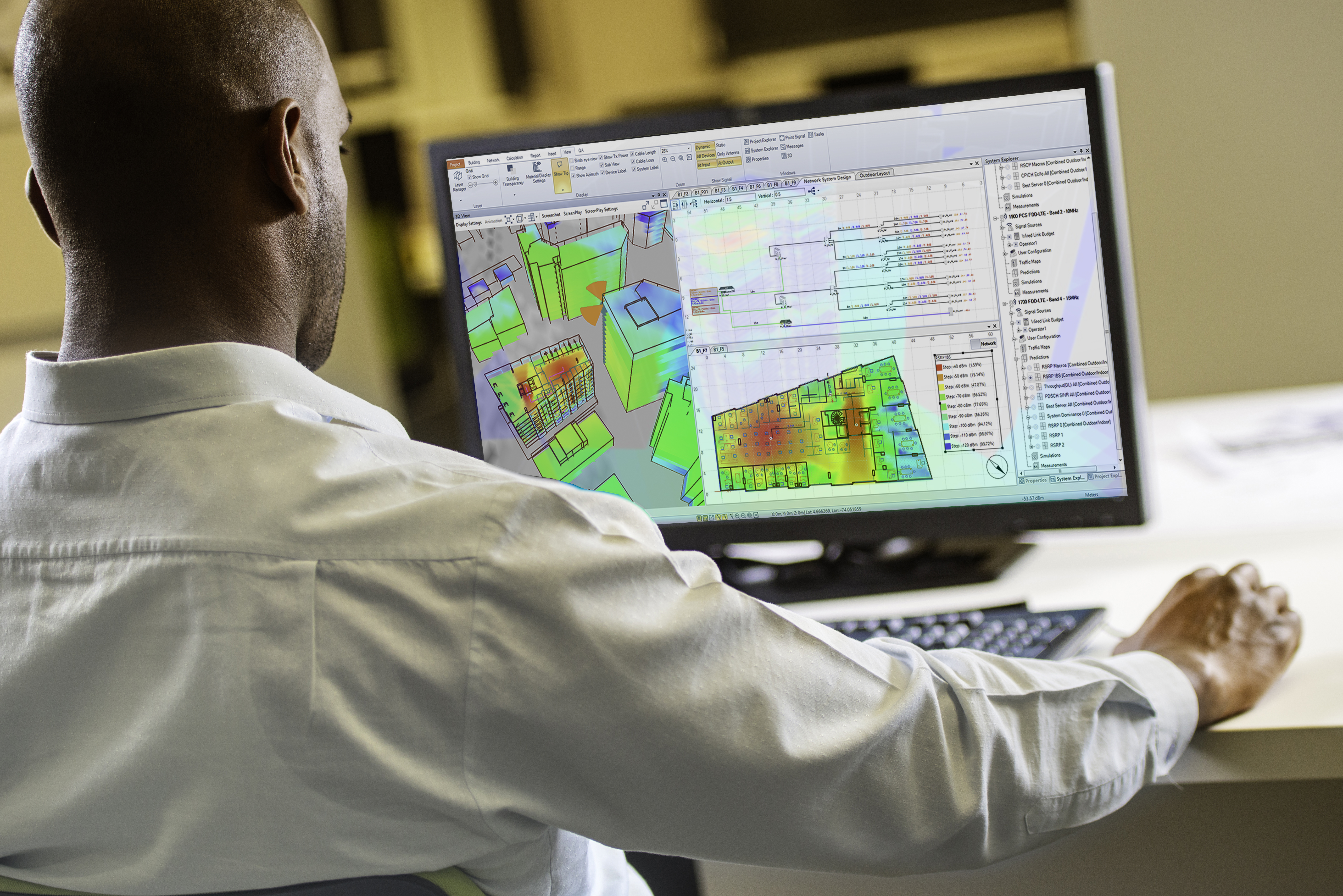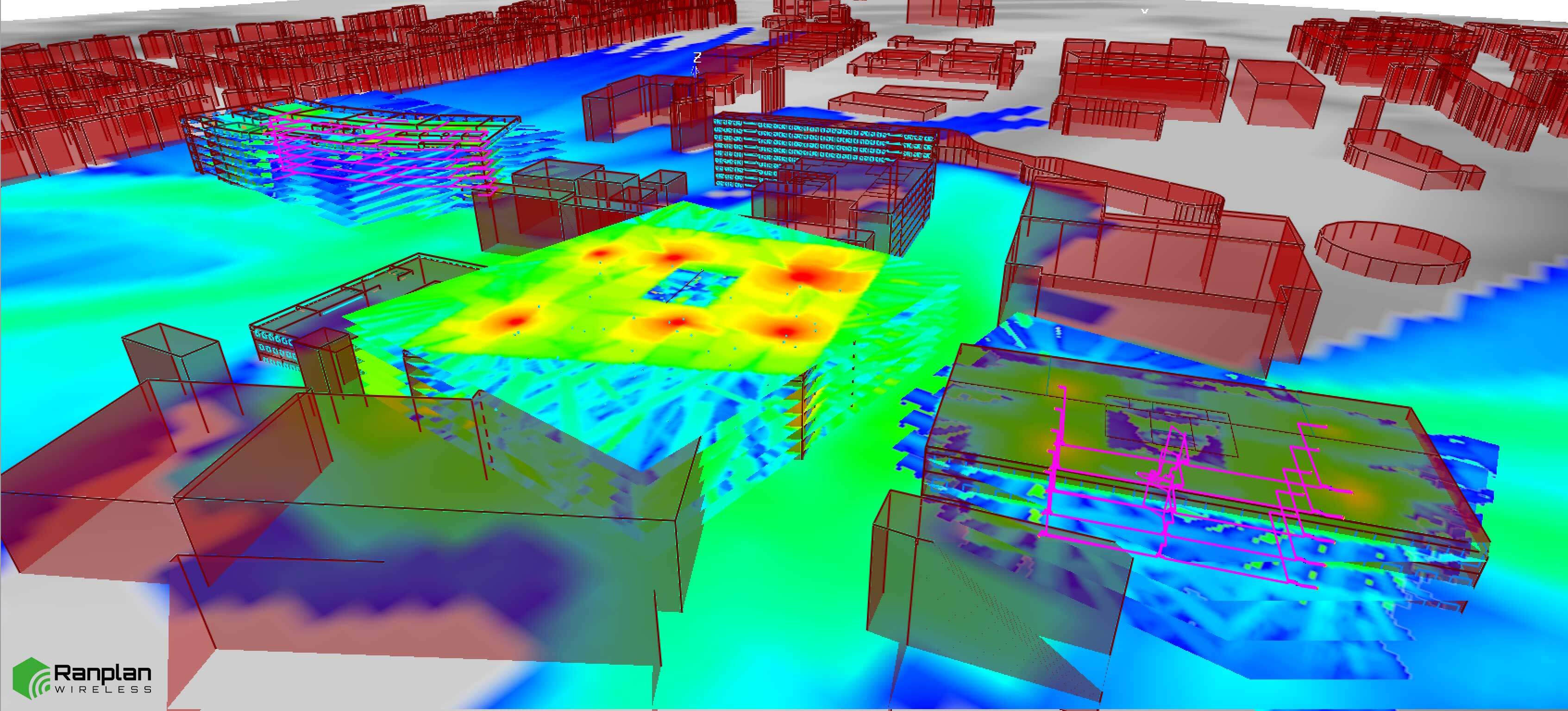The Ranplan team recently exhibited at the 5G World event in Amsterdam, which is now co-located with Broadband World Forum and Telco Cloud event to create the newly named Network X event. Through discussions with visitors to our stand and the sessions led by industry experts, we gained great insight into a range of 5G initiatives and future goals. Whilst the technological innovation of the industry is moving at lightning speed, it would appear there is still a significant distance to go before the full potential of 5G in live deployments. The pandemic has likely slowed down deployments for many reasons; site access, labour, cost, re-structure of businesses, etc. In most countries, life has resumed to pre-pandemic times and companies have picked up the pace in their determination to deliver 5G for a variety of use cases.
Did you say 6G?
With 5G networks still being rolled out, and many areas relying on 4G and even 3G networks, I was amazed that 6G was being talked about in such a realistic way. After all, what use do we have for 6G networks when we haven’t had the chance to see what 5G networks can fully achieve?
However, in some regions like Japan and South Korea, 5G is being used extensively in Private Networks for smart factories, office buildings, interconnected smart cities, and agricultural farms. These are the regions that seem to be the driving force towards 6G, which was reflected in China Mobile and SK Telecom presenting their perspectives on 6G at Network X.
A 2021 report by ABI Research predicts early commercial deployments will occur in 2028 and 2029, with more widespread rollouts coming in the following years. For now, many companies have begun to invest time and funding into the research and development of 6G. Here are two examples of Ranplan research projects currently underway:
- AI-powered Reconfigurable Intelligent Surfaces (AIRIS)
Researching how to use AI techniques to empower Reconfigurable Intelligent Surfaces (RISs), one of the key technologies envisioned for 6G. The AIRIS started on 1 November 2022 and studies how AI can be used to enable fast and accurate channel estimation and beamforming for RISs, as well as optimal RIS deployment in typical scenarios. The project is led by Ranplan with other four partners in both the UK and South Korea, which are Queen Mary University of London (QMUL), ModemGate, Korea Advanced Institute of Science and Technology (KAIST), and Incheon National University (INU).
- JoInt wireless commuNicaTion and sEnsinG by hologRaphic surfAce TranscEivers (INTEGRATE)
Focuses on the theoretical, algorithmic, and architectural foundations of integrated communication and sensing networks, developing the first open-access network-level simulator for joint communication and sensing for remarkable network performance while reducing energy consumption at the same time. The INTEGRATE project is a Horizon Europe project led by CNIT(Consorzio Nazionale Interuniversitario per le Telecomunicazioni), Italy, with other 10 partners including Centrale Superlec, BT, KU Leuven, NEC, InterDigital, Ranplan, etc.
Our team was pleased to participate, discuss, and present different scenarios of Public Safety and Mission Critical Network Design with our partners, designers, and other industry experts from around the world.

Green networks
There seems to be an industrywide consensus for achieving net-zero greenhouse gas emissions by 2050. Therefore energy efficiency and sustainability were hot topics of discussion at 5G World. This target significantly impacts the direction of the telecoms industry and how it will need to evolve.
Radio networks are typically very greedy when it comes to energy consumption but 5G brings new energy efficiencies. Could it be that this target is reliant on 5G paving the way to build networks and services that have a positive impact on society, the economy, and the environment?
An example of this would be that by using algorithms and big data analysis, network operators could predict the data load across their network. This prediction would then be used to automatically set radio units in low-power ‘sleep mode’ across areas where there will be few connected devices.
The job of the algorithm is to maximise power saving while ensuring that customers are not suffering from low network capacity. In a residential area, the software could detect a trend of high load in the evenings. While in a commercial office environment you would expect to see a high load throughout the daytime during the working week.
Designing Greener networks
Traditionally network designs were based on similar projects, equipment specifications and experienced engineers’ judgment to determine the configuration, expected performance and bill of materials. The complexities of smarter 5G technologies, unique environments and greener building materials produce wireless scenarios that are harder to predict. When using Ranplan Professional, RF planners can navigate the complexities to design a network that not only achieves network KPIs but also considers the power saving that could be attained with fewer radio units.

The virtual environment of Ranplan network planning software delivers a reliable “what if” environment to trial and error different network configurations prior to deployment. Additionally, once you have a network design, it can be used to plan, manage and validate any scaling or upgrading of the network when new requirements arise.